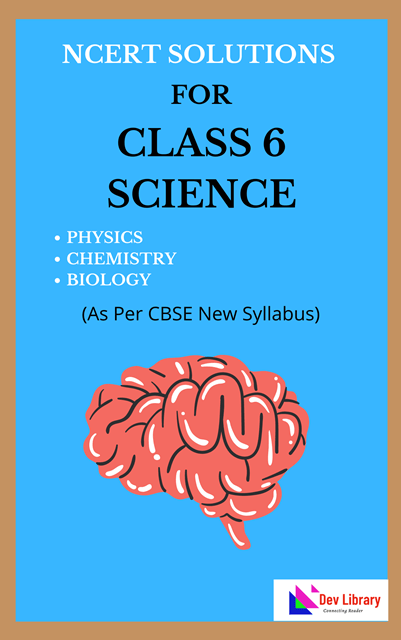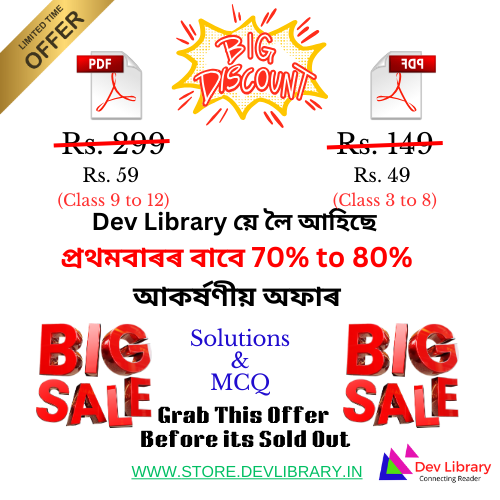NCERT Class 6 Science Chapter 6 Materials Around Us Solutions English Medium to each chapter is provided in the list so that you can easily browse through different chapters NCERT Class 6 Science Chapter 6 Materials Around Us Notes and select need one. NCERT Class 6 Science Chapter 6 Materials Around Us Question Answers Download PDF. NCERT Class 6 Solutions for Science English Medium.
NCERT Class 6 Science Chapter 6 Materials Around Us
Also, you can read the NCERT book online in these sections Solutions by Expert Teachers as per Central Board of Secondary Education (CBSE) Book guidelines. NCERT Class 6 Science Textual Solutions are part of All Subject Solutions. Here we have given NCERT Class 6 Science Chapter 6 Materials Around Us Notes English Medium. CBSE Class 6 Science in English Textbook Solutions for All Chapters, You can practice these here.
Materials Around Us
Chapter: 6
| Let us enhance our learning |
1. Visit your kitchen and observe how your parents have organised various edibles. Can you suggest a better sorting method? Write it in your notebook.
Ans: In the kitchen, organising edibles can be improved by grouping similar items together.
For example:
(i) Grains and pulses in one section.
(ii) Spices in another section.
(iii) Snacks and ready-to-eat items in a separate section.
(iv) Oils and condiments in another.
(v) Use transparent containers for easy identification and label each container for quick access.
2. Unscramble the letters (Column Ⅰ) and match with their properties (Column ⅠⅠ).
| Column Ⅰ | Column ⅠⅠ |
| (i) T R E M A T | (a) Objects can be seen clearly through it |
| (ii) U L S B E L O | (b) Occupies space and has mass |
| (iii) T N E R P A S N A R T | (c) Shiny surface |
| (iv) E R U S T L | (d) Mixes completely in water |
Ans:
| Column Ⅰ | Column ⅠⅠ |
| (i) T R E M A T | (b) Occupies space and has mass |
| (ii) U L S B E L O | (d) Mixes completely in water |
| (iii) T N E R P A S N A R T | (a) Objects can be seen clearly through it |
| (iv) E R U S T L | (c) Shiny surface |
3. The containers which are used to store materials in shops and at home are usually transparent. Give your reasons for this.
Ans: Containers are typically transparent so that the contents can be easily seen. This helps in quickly identifying and locating the materials stored inside.
4. State whether the statements given below are True [T] or False [F]. Correct the False statement(s).
(i) Wood is translucent while glass is opaque. [ ]
Ans: False.
(ii) Aluminium foil has lustre while an eraser does not. [ ]
Ans: True.
(iii) Sugar dissolves in water whereas sawdust does not. [ ]
Ans: True.
(iv) An apple is a matter because it occupies no space and has mass. [ ]
Ans: False.
5. We see chairs made up of various materials, such as wood, iron, plastic, bamboo, cement and stones. Following are some desirable properties of materials which can be used to make chairs. Which materials used to make chairs fulfil these properties the most?
(i) Hardness (does not bend or shake on sitting even after long use).
Ans: Wood, Iron.
(ii) Lightweight (easy to lift or to take from one place to another).
Ans: Plastic, bamboo.
(iii) Does not feel very cold when sitting during winters.
Ans: Wood, Bamboo.
(iv) Can be cleaned regularly and made to look new even after long use.
Ans: Plastic, iron, cement and stones.
6. You need to have containers for collection of (i) food waste, (ii) broken glass and (iii) wastepaper. Which materials will you choose for containers of these types of waste? What properties of materials do you need to think of?
Ans: For (i) food waste, use plastic containers that are leak-proof and non-reactive to food. For (ii) broken glass, choose hard plastic or metal containers to prevent cuts and ensure safety. For (iii) waste paper, opt for lightweight and durable containers. The properties to consider are the container’s resistance to leakage, strength, and durability based on the type of waste.
7. Air is all around us but does not hinder us from seeing each other. Whereas, if a wooden door comes in between, we cannot see each other. It is because air is _____________ and the wooden door is ____________ Choose the most appropriate option:
(i) Transparent, opaque.
(ii) Translucent, transparent.
(iii) Opaque, translucent.
(iv) Transparent, translucent.
Ans: (i) Transparent, opaque.
8. Imagine you have two mysterious materials, X and Y. When you try to press material X, it feels rigid and does not change its shape easily. On the other hand, material Y easily changes its shape when you press it. Now, when you mix both materials in water, only material X dissolves completely, while material Y remains unchanged. What can materials X and Y be? Can you identify whether material X is hard or soft? What about material Y? Justify your answer.
Ans: Material X could be salt (hard and soluble in water).
Material Y could be rubber (soft and insoluble in water).
Material X is hard because it does not change shape easily and dissolves in water.
Material Y is soft because it changes shape easily and does not dissolve in water.
9. (i) Who am I? Identify me on the basis of the given properties.
(a) I have lustre. _____________
Ans: Metal.
(b) I can be easily compressed. ____________
Ans: Gas.
(c) I am hard and soluble in water. _____________
Ans: Salt.
(d) You cannot see clearly through me. ______________
Ans: Opaque Object .
(e) I have mass and volume but you cannot see me. ____________
Ans: Air.
(ii) Make your own ‘Who am I?
Ans: (a) You can see clearly through me.
(b) I am soft.
(c) I am non-lustrous.
(d) I am liquid and insoluble in water.
(e) I cannot be compressed easily.
10. You are provided with the following materials-vinegar, honey, mustard oil, water, glucose and wheat flour.
Make any two pairs of materials where one material is soluble in the other. Now, make two pairs of materials where one material remains insoluble in the other material.
Ans: Soluble pairs:
(i) Water and glucose.
(ii) Water and vinegar.
Insoluble pairs:
(i) Water and mustard oil.
(ii) Water and wheat flour.

Hi! my Name is Parimal Roy. I have completed my Bachelor’s degree in Philosophy (B.A.) from Silapathar General College. Currently, I am working as an HR Manager at Dev Library. It is a website that provides study materials for students from Class 3 to 12, including SCERT and NCERT notes. It also offers resources for BA, B.Com, B.Sc, and Computer Science, along with postgraduate notes. Besides study materials, the website has novels, eBooks, health and finance articles, biographies, quotes, and more.



